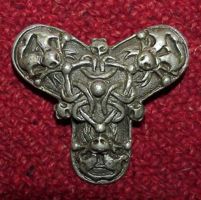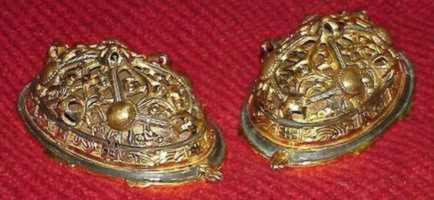 |
The Anglo-Saxon and Viking Age in Britain has left many traces on our modern existence, in areas as diverse as law, language, customs, prejudices, festivals and buildings. Because of the years that have passed since the period, details of how it was are vague, and it has generated much discussion, research and theorising by modern scholars. What was traditionally called the Dark Ages, largely because of the previous lack of information, is now opening up. One result of this is the period being renamed with the rather long winded sobriquet: The Early Medieval period. This includes both the Viking period and the Anglo-Saxon era. The Early Medieval age can then be sub-divided into the Pagan or Early Saxon period and the Later Anglo-Saxon period using the general conversion to Christianity as a the switch. Even this is not always a perfect way to pigeonhole events and artefacts.
Regia Anglorum is just another facet in this area of study. Our aim is to reconstruct elements of the Anglo-Saxon period as authentically as is practical. By physically making an object, especially if the piece is made with reconstructed tools of the period, give a huge insight into the reasons an artefact was made in the way it was. Apart from the sheer curiosity that making an artefact, it gives the maker an appreciation of the time it takes and the effort invested. This gives us for example, a better idea of how weapons were used in the period, or for that matter how quickly woad dye will fade on woollen cloth. This is called experimental archaeology, and fits in along side with normal historical research and archaeology, by comparing what the chroniclers of the time wrote, and the practicalities of constructing such a thing today, using 1000 year old techniques.
 |
 |
Click here to return to the village.
Click here to return to the manor of Drengham.